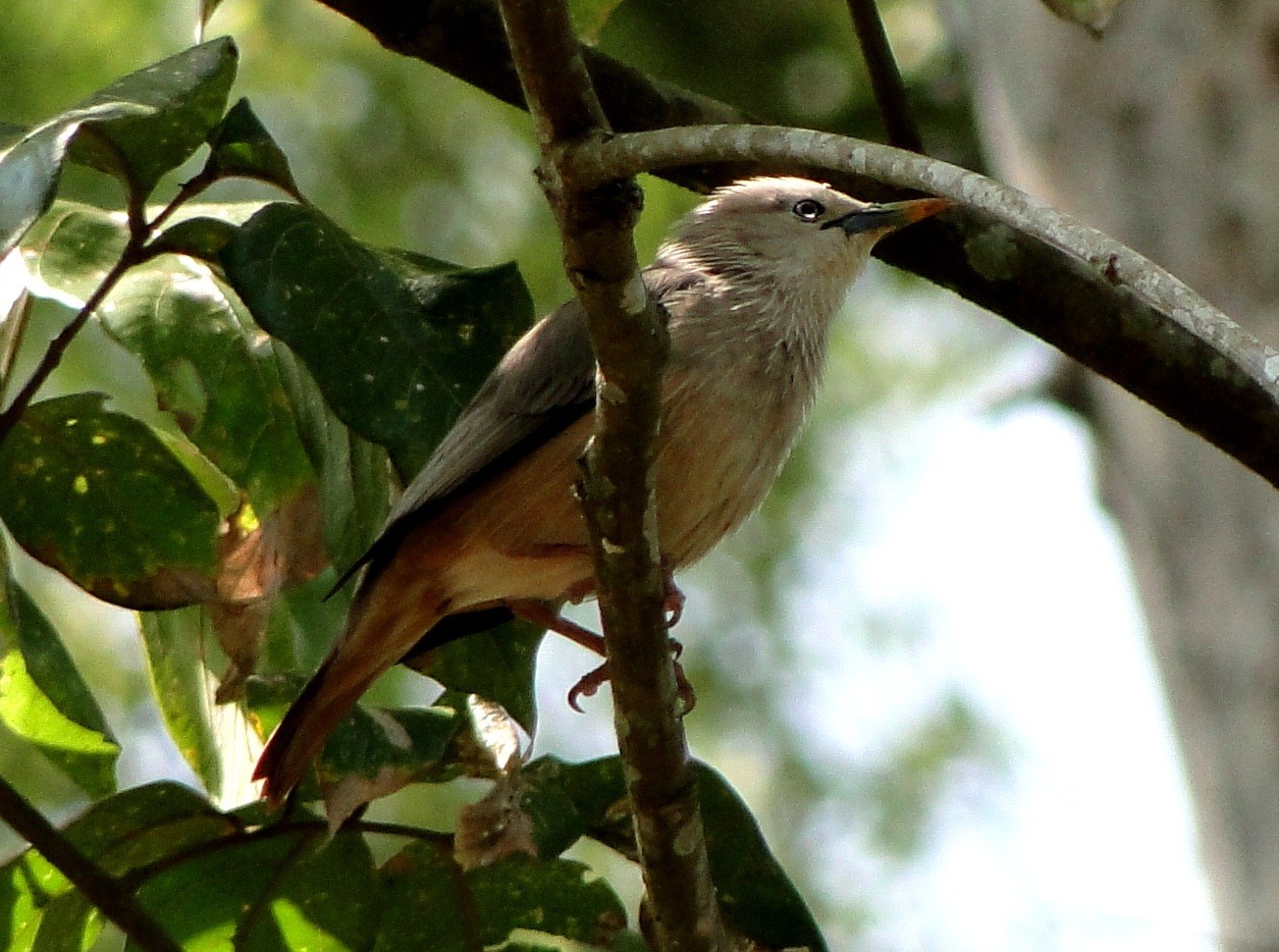Chestnut-tailed Starling
A species of Southern Asian Starlings Scientific name : Sturnia malabarica Genus : Southern Asian Starlings
Chestnut-tailed Starling, A species of Southern Asian Starlings
Botanical name: Sturnia malabarica
Genus: Southern Asian Starlings
Content
Description General Info
 Photo By Adarshajoisa , used under CC-BY-SA-3.0 /Cropped and compressed from original
Photo By Adarshajoisa , used under CC-BY-SA-3.0 /Cropped and compressed from original Description
The adults have a total length of approximately 20 cm (7.9 in). They have grey upperparts and blackish remiges, but the colour of the remaining plumage depends on the subspecies. In the nominate subspecies and blythii, the underparts (incl. undertail) are rufous, but in nemoricola the underparts are whitish tinged rufous, especially on the flanks and crissum (the undertail coverts surrounding the cloaca). The nominate and nemoricola have a light grey head with whitish streaking (especially on crown and collar region). Both subspecies have white irises and a yellow bill with a pale blue base. The sexes are similar, but juveniles have whitish underparts and just chestnut tips to the tail feathers. 
Size
20 cm
Colors
Gray
White
Orange
Nest Placement
Cavity
Feeding Habits
Chestnut-tailed Starling is omnivorous, consuming fruit, nectar, and insects through varied foraging methods. Unique adaptations enable efficient feeding on diverse food sources, with preferences depending on availability.
Habitat
Chestnut-tailed Starling predominantly inhabits open woodlands and regions where trees are sparsely distributed, often frequenting areas with young forestry plantations. They are also comfortable in environments close to human habitation, including cultivated lands. Their preferred terrain encompasses lowlands and foothills, ranging up to 2000 meters in elevation within the Indian Subcontinent and up to 1500 meters in Southeast Asia.
Dite type
Omnivorous
General Info
Feeding Habits
Bird food type
Behavior
The chestnut-tailed starling's nest is typically found in open woodland and cultivation. The chestnut-tailed starling builds a nest in hole. The normal clutch is 3-5 eggs. Like most starlings, the chestnut-tailed starling is fairly omnivorous, eating fruit, nectar and insects. They fly in tight flocks and often rapidly change directions with great synchrony. 
Distribution Area
The lack of monophyly in the earlier starling genera has led to this species being placed variously under genus Sturnia, Sturnus and Temenuchus in the past (Zuccon et al., 2006) and studies have suggested the reuse of an old name Temenuchus for members of this clade. Later studies have suggested placement in the genus Sturnia. There are two subspecies of the chestnut-tailed starling: S. m. malabarica: northeastern India, Nepal, Bhutan, Bangladesh and northwestern Burma S. m. nemoricola: southern China, Taiwan, Burma, Thailand, Laos, Vietnam and Cambodia Both the nominate subspecies and nemoricola are known to perform some poorly understood movements (e.g., S. m. malabarica has been recorded from Pakistan and in central and southern India). The taxon blythii is now usually (e.g. Rasmussen & Anderton, 2005) considered a valid species, the Malabar starling or white-headed myna (Sturnia blythii), instead of a subspecies of Sturnia malabarica. As S. m. malabarica only visits the range of blythii during the non-breeding period (winter), the two are not known to interbreed. However, a molecular study found the genetic divergence between S. blythii not significantly greater (between 0.2% and 0.8%) than between the sisters S. m. malabarica of northern India and S. m. nemoricola of Burma and Vietnam. 
Species Status
Not globally threatened.
Scientific Classification
Phylum
Chordates Class
Birds Order
Perching birds Family
Starlings Genus
Southern Asian Starlings Species
Chestnut-tailed Starling